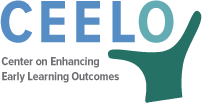Improving early education requires coordinated involvement among many different people, and clear, effective communication is the most fundamental skill an early education leader can possess when engaging others. Communication is more than sharing ideas or conveying information. Effective communication is a two-way exchange requiring a combination of skills to both give and receive information, whether it be between individuals or with groups.
Getting your message across or hearing another’s message is important to success. ECE leaders must be adept at multiple forms of communication including verbal, nonverbal, written and presentations. Providing clear communication to various audiences also requires knowing the content, the desired outcomes, choosing an appropriate form of communication and understanding the audience.
Nonverbal communication contributes substantially to how our message is received in face-to-face encounters. Nonverbal cues such facial expression, posture, gestures, distance, eye gaze and voice play important roles in how information and meaning are conveyed to others as well as how actions are interpreted. We send, receive, and interpret nonverbal cues throughout the day without always being aware of the message and impact as in the case of an inadvertent eye roll. Effective early education leaders are mindful of the power of their nonverbal messages and observe others’ responses to determine if they are remaining on track with their communication.
Listening is an essential component of good communication and paradoxically one of the most difficult skills to master. Good listeners actively endeavor to understand what others are really trying to say, regardless of how unclear the messages might be and without rehearsing their response before a the speaker finishes. Listening involves both the ability to decode verbal messages and interpret nonverbal cues. Effective listeners respond in a way that lets others know they have been heard, and encourage them to share their thoughts and feelings fully.
Speaking or verbal communication is an important and efficient way to convey your message. Verbal communication not only includes what is said but how it is said. Given the fast pace of activity in which early education leaders find themselves, spoken messages should be concise, clear, concrete, jargon-free, and compelling. Determine the voice that best matches the desired outcome and audience. Spoken messages that convey credibility, approachability, confidence, and a commanding voice are likely to heard and understood accurately. Although some leaders may feel introverted and shun the limelight, the ability to speak convincingly on behalf of an SEA, LEA, or other entity is an important skill that can be acquired.
Writing is a primary mode of communication for early education leaders whether taking the form of correspondence, internal agency communications, issuing guidance for the field, reports, or posting information on the web. Like verbal communication, content and style are vital in communicating messages to diverse audiences. Content should be clear, concise and align with the intended outcomes. Written communications can clarify or confuse, resulting in successful outcomes or unintended consequences. Writing in a style that provides specific, clear and sufficient information while considering the appropriate use of jargon or specialized terms for the intended audience can spell the difference between effective and ineffective writing. Early education leaders are wise to remember that while spoken words may be forgotten, the written word remains.
Visual presentations can be an efficient, effective ways to communicate given most people are visual learners. Powerpoint presentations, infographics, graphic organizers, overheads, pictures, models, handouts, and flowcharts help audiences take in and understand the information you seek to share. Most people learn best when information is presented visually and verbally, though speakers should avoid the sin of reading displayed material to an audience when they are capable of doing so themselves.
Resources
- Nonverbal Communication Skills
- How to Read Body Language
- 10 Steps to Effective Listening
- 5 Ways to Listen Better (TED video)
- Key Active Listening Techniques
- 10 Tips for Improving Your Public Speaking Skills
- 10 Verbal Communication Skills Worth Mastering
- Overcoming Bad Presentation Habits
- What is Effective Written Communication
- 10 Tips for Effective Business Writing
- 8 Tips to Create Epic Visual Presentations
- How and When to Use Visual Aids to Make an Effective Presentation
Activities
- The Dirty Dozen of Strategic Communication
- Communications and Engagement Workbook
- Message Creation Checklist
- Network Mapping Tool
- Facilitation Planning Checklist
- Active Listening Exercise (found on Leadership Academy page- cohort 3- May 2017)
